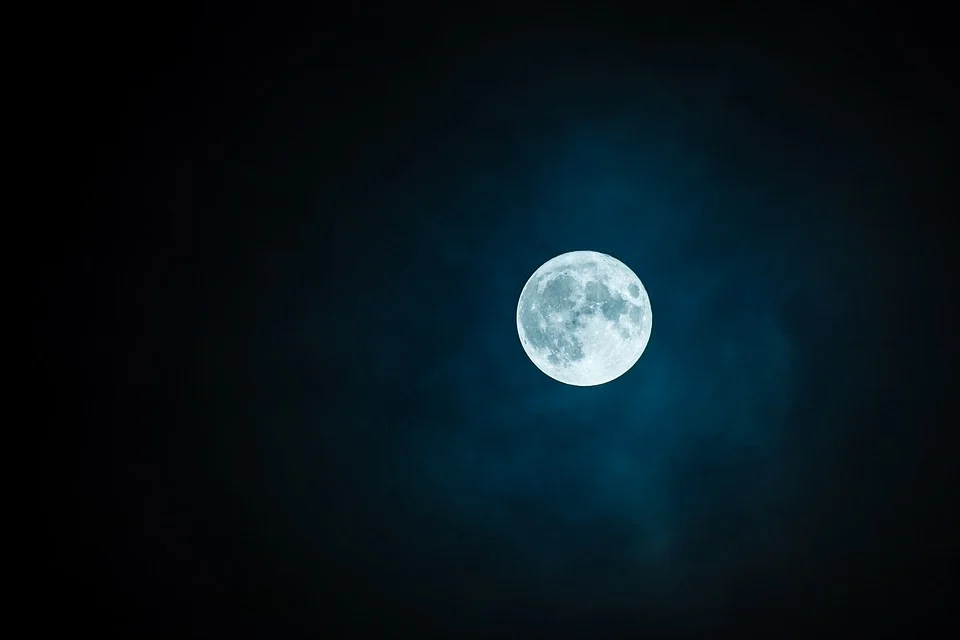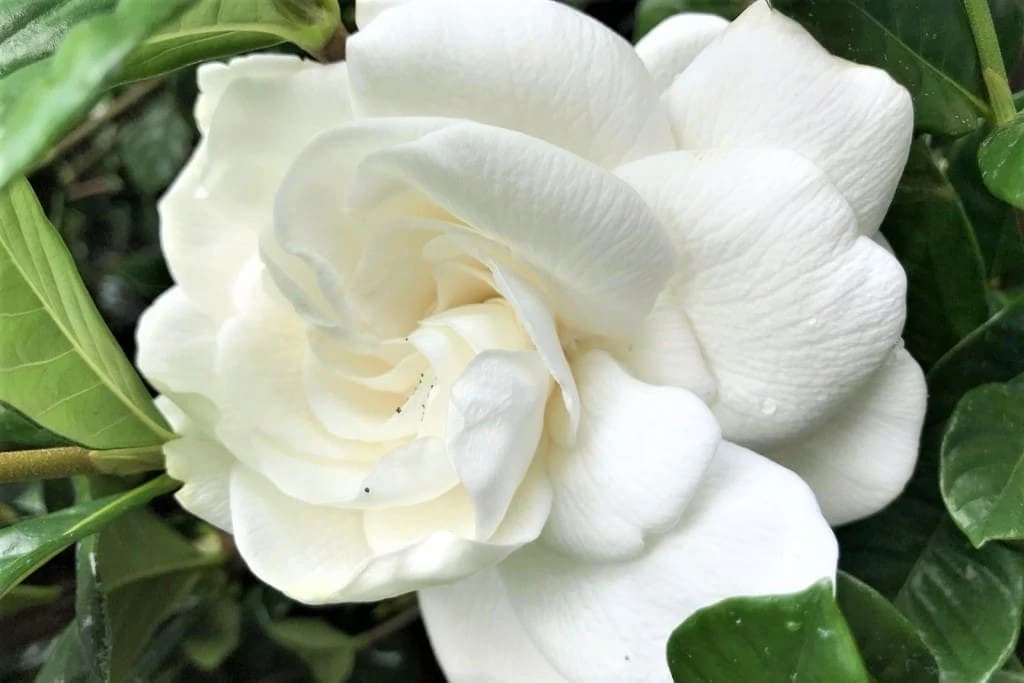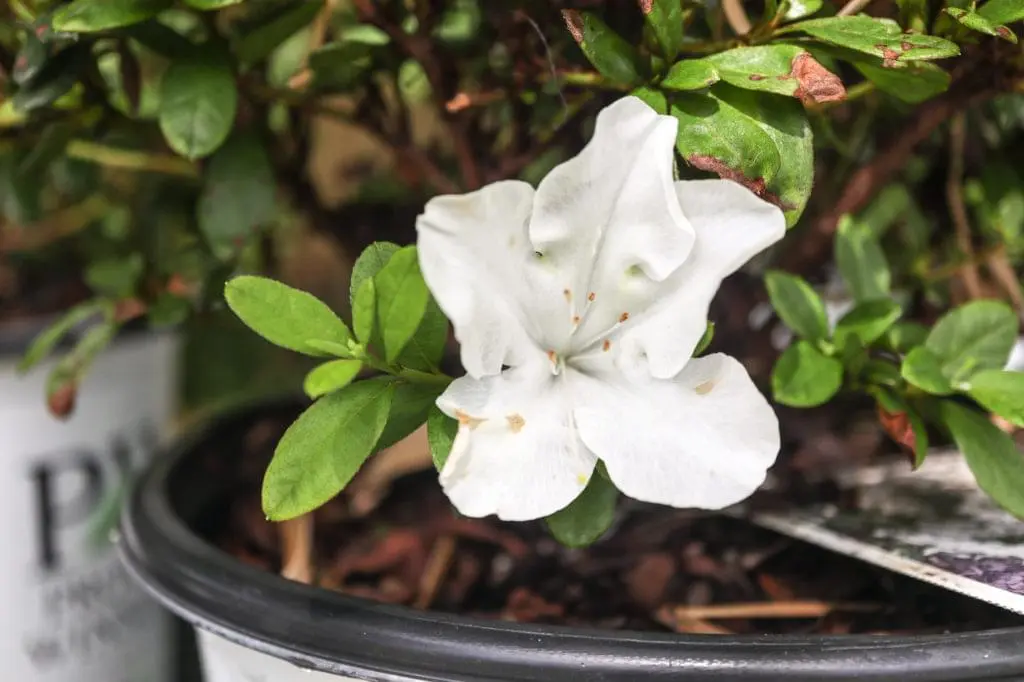by Amanda Rose Newton
The temperatures are cooling and Halloween is just around the corner, which makes the perfect recipe for spooky evening strolls. Plants have a way of creating a mood, and that is not limited to just daytime celebrations.
Moon gardens are designed specifically for nighttime enjoyment, with the focus on white and silver hues to reflect the light of the moon. If you look forward to the spooky season all year long, consider installing a moon garden to give your landscape a ghoulish glow!

Like all design projects, it helps to go in with a plan in hand! Moon gardens offer quite a bit of flexibility but loosely feature plants from four categories: heavily perfumed blooms, white blooms, silver foliage, and night bloomers.
Remember, closely grouped gardens have more visual impact than flowers spread around, which becomes all the more true once dusk falls.
Fragrant Florals
Several shrubs and annual flowers produce flowers featuring a heavenly scent. Unfortunately, these make their debut (and sometimes exit) during the nighttime hours.
By creating additional space and time in the yard outside of daytime hours, not only are you enhancing the value of your landscape, you are getting the most of your space.
Scented plants engage the senses outside of the usual visual realm, drawing more focus to your garden and more enjoyment to you. Below are a few easy to grow fragrant flowers.
Roses: The classic tea rose is a longtime favorite for heavy fragrance. To add to the moon garden theme, choose one of the many white cultivars, including “Winchester Cathedral”, “Iceberg”, “Adelaide D’Orleans”, and “White Parfum De Provence”.

Night Blooming Jasmine (Cestrum nocturnum): Jasmines are well known for their light and sweet scent. The night-blooming jasmine, a popular shrub that features foliage beautiful even without the blooms, is truly the star of the night-time garden. The white flowers are perfect moonlight reflectors and the scent is to die for. Talk about Halloween-appropriate!
Gardenia (Gardenia jasminoides): While not always in bloom in the fall, the gardenia is a must for any sensory garden. Like the jasmine, it also just so happens to naturally adhere to the moon garden dress code of whites. Even after labor day, one cannot argue with how good gardenias look in the landscape.

Nocturnal Blooms
A moon garden is a perfect excuse to use plants that are working the night shift. Several plants, including the already mentioned night-blooming jasmine, put on their best show after the sun has gone down and will be a welcome sight on cool evening walks, and Halloween wine and cheese nights. If you haven’t considered a reason to mix your love of plants with wine, make it an October tradition by attending our Spooky Sip N’ Stroll on the 29th.
Angel’s Trumpet (Brugmansia spp): This small tree stunner also happens to put on its blooms after the sun has gone down for the day. The pink inflorescences are just light enough to catch the light and cast a creepy hue to the landscape. The blooms stay on for the morning hours and are sure to capture the eye as a landscape focal point.
Moonflower (Ipomoea alba): Moonflower is a type of morning glory vine, with white blooms replacing the usual purple. Like the angel trumpet, they are most productive in the nighttime hours, and their vertical vining tendency adds to the landscape by drawing the eye upward, adding more space to your garden.
Evening Primrose (Oenothera biennis): Native to the USA and choosing to open its blooms right at dusk, this makes them perfect for planting near the patio or deck to give you the best seat for the show. By noon the next day, the flowers have closed, which provides just enough time for pollinators to get an early breakfast.
Night-blooming cactus (Cerus spp.): Another climber, this cactus is famous for its bright white nighttime flowers that are often moth or bat pollinated. Dragon fruit, a favorite edible to grow here in Brevard, also happens to be a night bloomer, making it the perfect edible enhancement for your moon garden.
White for All Occasions
To get the most out of your moon garden design, it helps to stagger your bloom times by the season. Meaning, make sure you feature plants that will be flowering in spring, summer, and fall. The following are a few easy choices to help you pick and choose the white bloom that would best compliment your garden.
Spring Bloomers
Azaleas: (Rhododendron spp.) Azaleas are one of the first flowers to make their debut in February/March when much of the garden is still asleep. With several cultivars available in white (or mixes of color) this low-growing, shade-loving shrub is a great mid-size addition to the moon garden.

Magnolias: (Magnolia spp.) To add height and longevity to your landscape, consider incorporating white blooming trees into your moon garden design. The magnolia blooms are large, long-lasting, and attractive even during the day.
Spring to Summer Bloomers
Sweet Alyssum (Lobularia spp.) Alyssum is a spring classic here in Florida, being just as at home in the landscape as it is in a container garden. Doubling as a groundcover, which is spectacular under the light of the moon, it is a great feature for lining driveways or paths for extra visual guidance.
Lilies: Whether Crinum or Canna, both can feature white flowers that keep on blooming throughout the hot months. They make great backdrops to some of the smaller annuals and groundcovers in a garden bed.
Pentas (Pentas lanceolate): Not only do they come in white, but these fool-proof flowers are a pollinator favorite. Coming in multiple sizes, from dwarf to up to 3 ft, you can choose whichever size best fits your garden design.
Daisies: Perhaps the classic white flower, daisies are impossible not to love. Their flat aster inflorescences uniquely pick up the moonlight illuminating the garden.
Fall Favorites
Mums (Chrysanthemum spp.): Now is the time for mums! While they might not last year-round, the white mums create great visual interest and can serve well in a moon garden when strategically placed in containers. Associated with seasonal festivals and Halloween of course, these are especially great to give your moon garden a truly timely fall feel.
Stokes Aster (Stokesia laevis): While typically seen in its usual blue, the ‘alba’ varieties come in pearly white, making it a great foil for the dark of night. The silvery foliage is an added bonus.
Vinca (Vinca spp): Vinca or impatiens do well year-round and, like the daises, the flat flowers allow for enhanced light reflection.
Silvery Foliage
Dusty Miller (Senecio cineria): The easy-care, fall-foliage classic, dusty miller adds visual impact even without much of a floral showcase. The silver foliage reflects light just like white flowers and help add to the eerie feeling.
Texas Sage (Leucophyllum frutescens): For something featuring a bit of height, a hedge of Texas sage looks spectacular day and night. The purple flowers are pretty on their own, but the whole look comes together with the addition of silvery leaves.
Silver Buttonwood (Conocarpus erectus var. sericeus): Proof that Florida natives can enhance any garden, the silver buttonwood provides excellent year-round interest with its showy silver hue.
Succulents: For low-input gardening, consider throwing in a few silver-toned succulents, like agave or sedum. Not only are they easy to care for, but they also attract sensory interest due to their striking shapes and silver colors.
Alocasia (Alocasia spp.): With so many varieties to choose from, many choose to decorate their leaves with pops of white and silver. Low or tall-growing, shade or partial shade, there is one for every corner of the garden.


